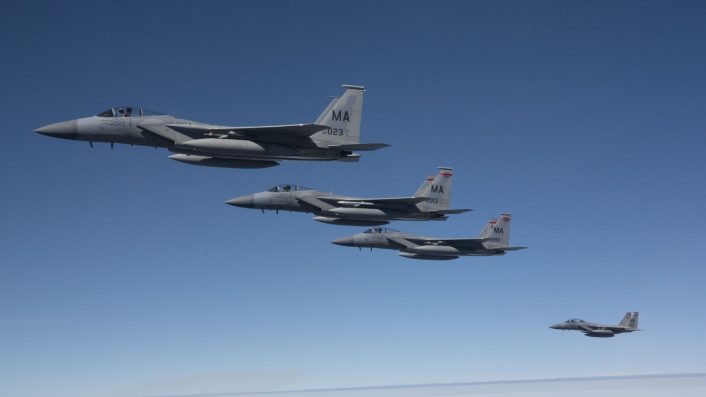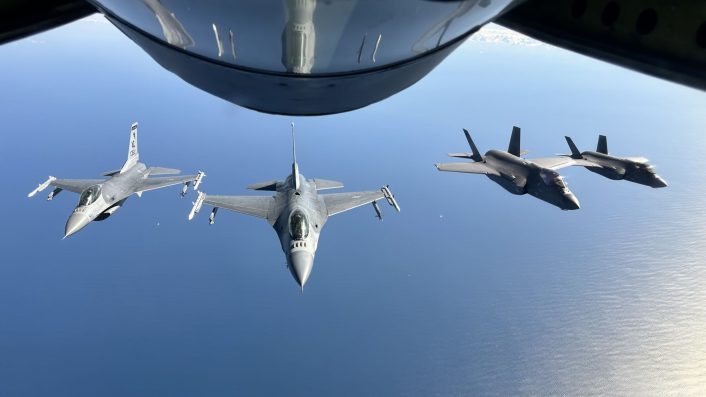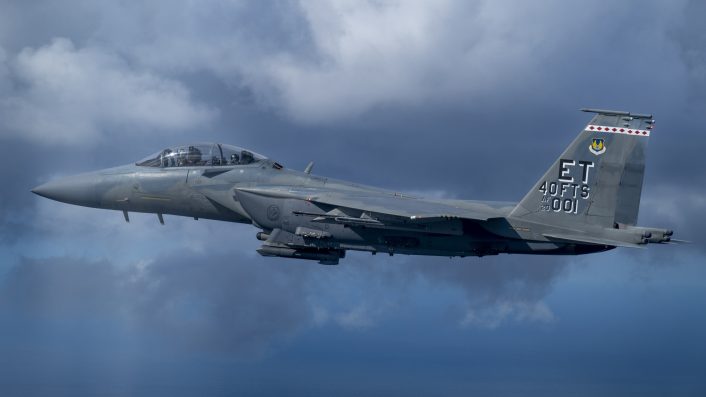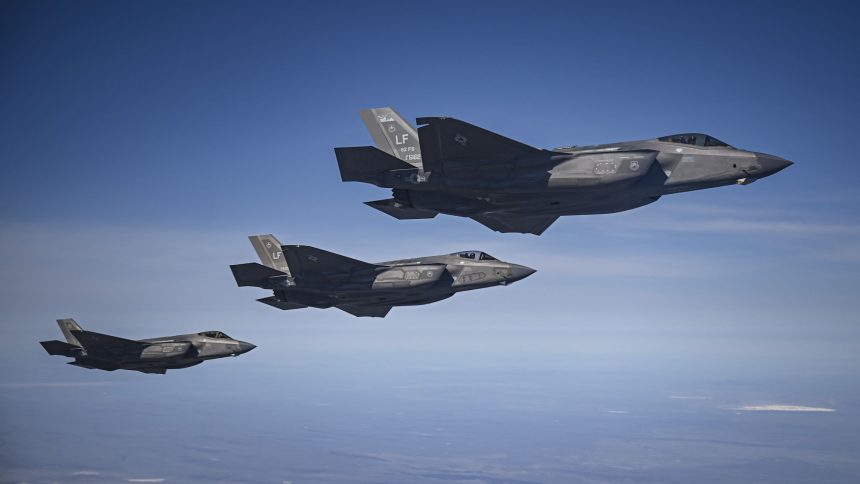An unclassified U.S. Air Force report, mandated by the 2025 NDAA, included figures of the required combat fleet, calling for an increase of nearly 300 jets.
The U.S. Air Force needs a total of 1,558 combat-coded jets, nearly 300 more than its current fleet of 1,271 in fiscal year 2026, which could be supported by U.S. aerospace majors hiking their production numbers. These figures, and a host of industrial and operational preparedness recommendations were a part of an unclassified U.S. Air Force report, mandated by the 2025 NDAA (National Defense Authorization Act) and to be submitted every year until 2029.
Breaking Defense and Inside Defense were the first to report about this after obtaining the report, and specified that the document does not seek additional funding. However, it recommends alternative ways to allocate and prioritize money to boost fighter production and “encourage lawmakers to consider providing greater resources to the service.”
Achieving the figures mentioned in the document is currently not feasible, owing to a host of defense industrial, international defense sales, equipment needs of the other services, and general budget constraints. It would yet be ideal and consistent with the Trump administration’s Interim National Defense Strategic Guidance.
To reach the goal of 1,558 jets over the next 10 years and procure fighters at a greater rate, the service concludes a target inventory of 1,369 aircraft could be reached by “early 2030.” However, it also warns it could still be unaffordable owing to competing modernization needs.
U.S. Air Force, U.S. Navy, and U.S. Marine Corps, along with U.S. Army Patriot missile batteries line up on the runway for an elephant walk during a routine operational readiness exercise at Kadena Air Base, Japan, May 6, 2025. pic.twitter.com/eE0VQrw75A
— U.S. Forces Japan (@USForcesJapan) May 7, 2025
Increasing F-35 and F-15EX production numbers
Quoting the report, Breaking Defense said that the government can “meet acceptable military risk milestones by 2030” by hiking procurement of the Boeing F-15EX and Lockheed Martin F-35A. Boeing can touch an annual production rate of two dozen F-15EXs by FY27, expanding to 36 jets with “additional funding for facilities.”
The Air Force’s current plan for 129 F-15EXs, of which 126 expected by the end of 2030, itself is “nine months behind schedule.” Among the reasons for the delay are the labor strikes at Boeing’s plant which heavily impacted production, with workers now on strike for over 12 weeks.
Boeing’s Vice President for Fighters Mark Sears told Breaking Defense the company expects the F-15 production line to be active well into the next decade, with the aircraft operating through the 2050s, while the company plans to “double output to 24 aircraft in the coming years.” This means its present capacity is 12 airframes annually.
The Air Force’s F-35A program of record has remained unchanged at 1,763 aircraft under the Trump administration, with the document stating that Lockheed could churn out 100 F-35As a year by FY30. Overall, as we explained previously, the U.S. Air Force, Marine Corps and Navy have about roughly 600 F-35s, based on some new deliveries and numbers counted up until the end of 2024.
Of these, 385 were Air Force’s jets, with that number now increased after the 500th F-35A was delivered to the service in August 2025. These numbers are expected to further rise by the end of the year.

The U.S. Air Force’s F-22 Raptor fleet meanwhile stands at 180 airframes, with 32 in an older configuration largely used for flight testing and training. Efforts are underway to upgrade the Raptor with a new IRST pod, stealthy fuel tanks, and a host of other electronic, avionic and software upgrades.
The report also touches upon the F-47 NGAD, noting that the sixth-generation jet’s production lines are set to open soon. Boeing revealed recently that one example is already under production. While it called it the “number one modernization priority,” the unclassified version of the document did not include a procurement figure.
F-35 numbers and production
In an Oct. 21, 2025 earnings call, Lockheed Martin CEO James Taiclet revealed that, during the third quarter of 2025, the company delivered 46 F-35 Lightning II aircraft, and now expects to complete a total of “175 to 190 deliveries” by the end of the year. The company has delivered over 1,200 F-35s globally, amassing over one million flight hours.
Taiclet also mentioned the definitized Lot 18 and 19 contract. This will see the company building up to 296 F-35s for the U.S. services, international partners and Foreign Military Sales (FMS) customers, with first deliveries in 2026. The new $12.5 billion Sep. 29, 2025 contract modification had increased Lot 18 to 148 aircraft and added 148 F-35s as part of Lot 19. Of these, 105 are A variants, with just 40 meant for the U.S. Air Force and 65 for foreign buyers.

Moreover, the company’s efforts to speed up F-35 deliveries also come amid reduced F-35 acquisition in the FY2026 budget, as the aircraft contributes about 30% of its revenue. The Air Force would procure only 24 F-35As in 2026 for roughly $4 billion, less than the 44 F-35s, costing $4.8 billion, the Air Force is on track to buy this year, and the 51 jets, worth $5.5 billion, the service bought in 2024.
Gen. 4 and 4.5 fleet
The U.S. Gen. 4 and 4.5 fleet, according to a Feb. 2025 report by the Mitchell Institute of Aerospace Studies, has been defined as ”far too small to meet its operational requirements.” Moreover, “the average ages of its fighters and bombers have reached unprecedented highs, and its readiness to fight tonight remains at a historic low.”

This is owing to “decades of underfunding and delayed modernization, a trend that continues today.” The gradual drawdown began in the 1990s after the collapse of the Soviet Union.
That report thus called for establishing the logistics and laid the conceptual foundation for operating a variety of air-to-air, attack, electronic warfare and ISR CCAs to make up for the fall in numbers. The USAF report also recommends “more investment” in sustaining the aircraft, Breaking Defense said, pointing to an annual shortfall of $400 million for its aircraft maintenance contract fund.









